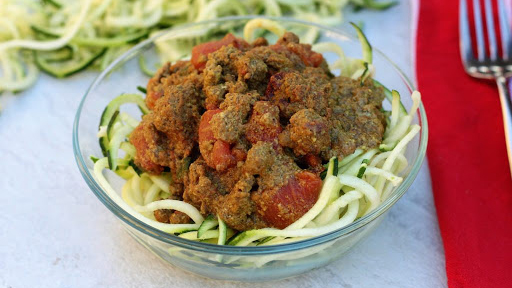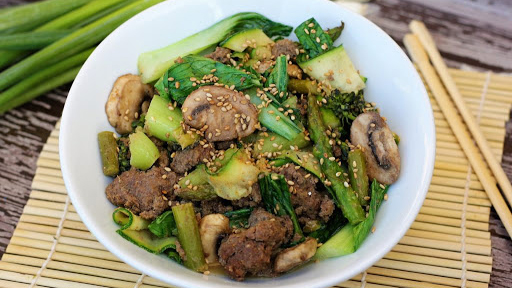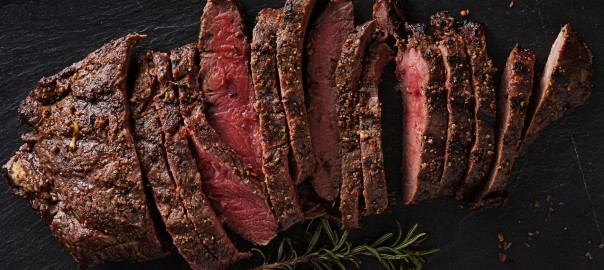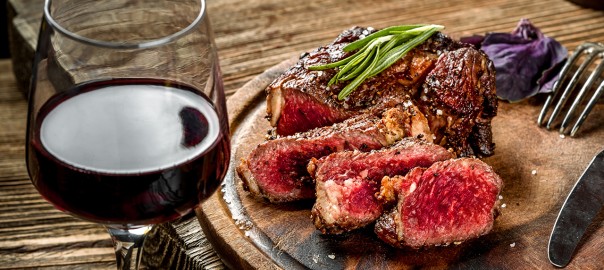Getting healthy doesn’t happen by accident, and isn’t achieved through dieting.
In my 20 years in the fitness industry, I’ve seen every fad come and go. Sadly, I’ve participated in some, and even stood in some pretty high heels preaching those philosophies to others. (Cute high heels are my version of a soapbox!)
All that diet dogma stopped when I experienced my own health scare that seemed to stem from my, “super clean, low-fat, low-calorie, sleep when I’m dead, workout three-hours a day” lifestyle.
A brain scan revealed that I was headed for early-onset Alzheimer’s due to — among other things — years of too little sleep and a diet chock full of calorie-free foods and beverages. My blood work showed I wasn’t absorbing any of the vitamins and minerals from my food — despite the veggies I was eating — due to leaky gut. My family, my diagnosis, and my resolve to never again lead people astray began my quest for truth. This several-year journey involved interviewing the finest names in science and medicine, pouring over medical data, trial and error, a team of registered dietitians, and my new “why“… ME!
So, join me on a little checklist of suggestions and remedies I used to completely 180 my health (and my brain, thank you very much!). My thoughts might challenge the norm and cause you to second guess some of my ideas. But that’s okay. I’m secure enough with myself and the research I’ve done to know that the solutions by which I live are well-conceived and, most importantly, not quick fixes.
1. Take Back the Word Diet
Unfortunately, the fitness industry I inhabit — and take some responsibility for — has perpetuated a myth that a diet is a strict, regulated, black and white approach to food. There’s a “right and a wrong” way to do something. Or, the latest and greatest diet will, “fix all your weight loss problems.” Or, “you’ve failed at your diet because you haven’t had the same results as others.”
I’m here to say with 100% certainty: No one diet works for everyone.
It’d be easier for me to tell you: “eat X, Y, and Z and you’ll lose weight.” Unfortunately, our bodies don’t work like that. Research shows that each individual person has a unique gut microbiome. Your gut biome plays a HUGE role in your body’s ability to lose weight. If your gut biome is off, your entire body is off.
This leads to weight loss resistance, imbalanced hormones, fatigue, brain fog, decreased sex drive, lack of concentration, insomnia, and more…. and it all stems from your gut.
Guess where the problem starts? You guessed it, the quality of your food.
Instead of following a diet, take back the word DIET, and create your own; one that works best for you! Try a diet — or better, “a way of eating” — that promotes gut health. If you do this, your overall health will change for the better.
2. Quality Meat
I cannot tell you how important food quality is to your health. It’s literally everything!
It’s the reason my family only eats meats from ButcherBox. I’d rather eat no meat at all than meat that comes from conventional farms. Aside from superior taste, I know that the sustainable farming practices ButcherBox champions are ones I can feel good about. Nutritionally speaking — and this relates back to gut-health — grass-fed, grass-finished meat provides more vitamins and minerals (and fewer inflammatory side-effects) than conventional meat. Listen to this podcast for mind-blowing stats on meat quality. I hope you become as appalled as I was before I knew the truth and that it influences change for you and your family.
Be sure to read to the end, because I’m giving you TWO recipes I love using ButcherBox meat.
3. Drink TONS of water
Hydrate, hydrate, hydrate. There is no alternative for pure, fresh clean water. Drinking water keeps your body functioning, your engine running, and your skin glowing. Drink at least half your body weight in ounces.
4. Eat Whole Organic Foods
Aim for 80% of your calories to come from whole foods that are as close to nature as possible with minimal processing. I’d say 100 percent, but I don’t think that’s realistic. Eat organic as much as possible. If you can’t, don’t stress! Just do your best.
Take the time to know where your food comes from. There is a direct correlation between the quality of food you put in your body and how you feel (see #2 above).
5. Cycle Your Diet
Cycle your diet just like you cycle your workouts. Your body likes homeostasis, so if you eat the same thing every day for weeks, and months, and years, your body stops adapting, and therefore, stops losing weight. So cycle your diet with an emphasis on carbs some days, high fats other days, and higher protein with limited carbs and fat on other days. Diet phasing is the hallmark of the 131 Method. What I want you to take away is the fact that you should approach your diet just like your workouts! Change leads to change.
6. Keep it Out
If it’s not in your house, you won’t eat it. Remember this when you shop! Your habits can change by simply creating the environment you desire. Keep healthy foods at eye level so they’re the first things you see and grab.
7. Closing Time
Set a time in the evening to end eating. Give your body the night to recharge and rest instead of digesting food. Close the kitchen and stop eating a few hours before bedtime. Tinker with intermittent fasting for even greater benefits. Need more proof? Check these out…
Are 6 Small Meals Making us Fat – LISTEN NOW!
Eating Trends and Common Myths – LISTEN NOW!
8. Become a Politely Picky Patron
You can absolutely adapt restaurant options to support your nutritional needs. Be extra polite, and ask for a few tweaks that make your meal work for you. Or, just eat at home more often so YOU choose the quality and ingredients you take in.
9. Learn the Difference Between Hunger and Appetite
Much of our eating is not hunger-based. Learn the triggers that send you snacking. By identifying the moments when you like to nibble, you can find alternative and more productive solutions. I like using a journal for this, but you can leave yourself a voice memo, write some sticky notes, meditate, or simply become present in those moments. I go into this at great length in the 131 Method.
10. Marry a Super Hot Guy who Likes to Cook
I’m half-joking, but kinda not. One of my best secrets is living in a house where one, or both, people love to cook.
I’m pretty good at a few things — I’ll chop veggies like nobody’s business. But, it’s my husband, Bret, who cooks up a storm. He values health and food quality as much as I do, which is a blessing. I know a lot of women who must toe the line for the whole family and constantly deal with their husband’s pizza-eating, chip-crunching ways. #sabotage
Try leading by example, however, by casually making your own changes. Chances are, one or two will catch on!
In the spirit of influencing the ones you love, I’m going to give you TWO of my favorite 131 recipes. “A way to a man’s heart is through his stomach,” and, most men like meat, so here ya go (just choose quality, ok?!). The family will never know these recipes are 131 approved (meaning healthy, gluten-free, anti-inflammatory and delicious)
Bret brings his “Bowl Skilz” to our family several nights per week. It’s another reason we love our ButcherBox…our freezer is stocked with options and he just picks what we want: Grass-finished ground beef, organic chicken breast, wild salmon, humanely-raised bacon..and off he goes until there’s a beautiful bowl set on the table.
Enjoy!
Indian Spiced Beef & Zoodles
Yield: 4 servings
Serving Size: 1/4th recipe
Prep Time: 10 min
Cook Time: 12 min
Ingredients:
- 16oz grass-fed, grass-finished 80% lean ground beef or bison
- 1 cup diced canned tomatoes (use fire roasted if you like a little spice)
- ¾ cup canned coconut milk
- 2 tablespoons coconut aminos (or soy sauce alternative)
- 2 teaspoons cumin
- 2 teaspoons turmeric
- 1½ teaspoons cinnamon
- 1 teaspoon garlic powder
- Sea salt and pepper, to taste
- 4 medium zucchinis, spiraled
Method:
- Coat a large, nonstick skillet with cooking spray over medium. Add beef and brown on all sides for 3-4 minutes. Add tomatoes, coconut milk, coconut aminos, cumin, turmeric, cinnamon, garlic powder, and salt and pepper and sauté until beef is cooked through (about 5 minutes), then turn to low and simmer for 3 minutes.
- Toss zucchini noodles in a pan and quickly toss to coat, then remove and plate among four plates. (If you leave the noodles in the hot pan too long, they’ll release water. You only want to warm them quickly, then plate).
Nutrition Information:
Calories: 453| Protein: 33g | Fat: 30g | Carbs: 14g | Fiber: 2.5g | Net Carbs: 11g
Vegetable Beef Tahini Bowl
Yield: 4 servings
Serving Size: 1/4th recipe
Prep Time: 10 min
Cook Time: 10 min
Ingredients:
- 1 tablespoon avocado oil
- 2 garlic cloves, minced
- 1 pound 85/15% grass-fed, grass-finished beef
- 200g bok choy, chopped
- 2 cups (200g) broccoli rabe, stems removed, chopped
- 16 asparagus spears (200g), chopped
- 8oz mushrooms (227g) sliced
- 1 small zucchini (200g), peeled into ribbons
- ¼ cup coconut aminos (or soy sauce alternative)
- ¼ cup tahini
- 2 teaspoons garlic powder (such as Flavor God)
- ½ teaspoon sea salt
- ½ teaspoon pepper
- 1 teaspoon sesame seeds (optional)
Method:
- In an extra-large skillet, heat avocado oil over medium. Add garlic and sauté for 1 minute.
- Add beef and brown on all sides for 4 minutes. Add the whites of the bok choy and stir for 1 minute, then add the broccoli rabe and stir for 1 minute. Stir in the asparagus, mushrooms, and zucchini.
- Whisk together the coconut aminos, tahini, garlic powder, salt, and pepper until smooth. Add to skillet and coat everything well. Sauté for another 3-4 minutes, or until vegetables are tender and beef is cooked through and most of the liquid is absorbed. Sprinkle with sesame seeds, and serve.
Nutrition Information:
Calories: 425| Protein: 29g | Fat: 29.5g | Carbs: 14g | Fiber: 4g | Net Carbs: 10g
One other subtle way you can get the family interested in repairing their health: The 131 Method book! Pre-order your copy here.









